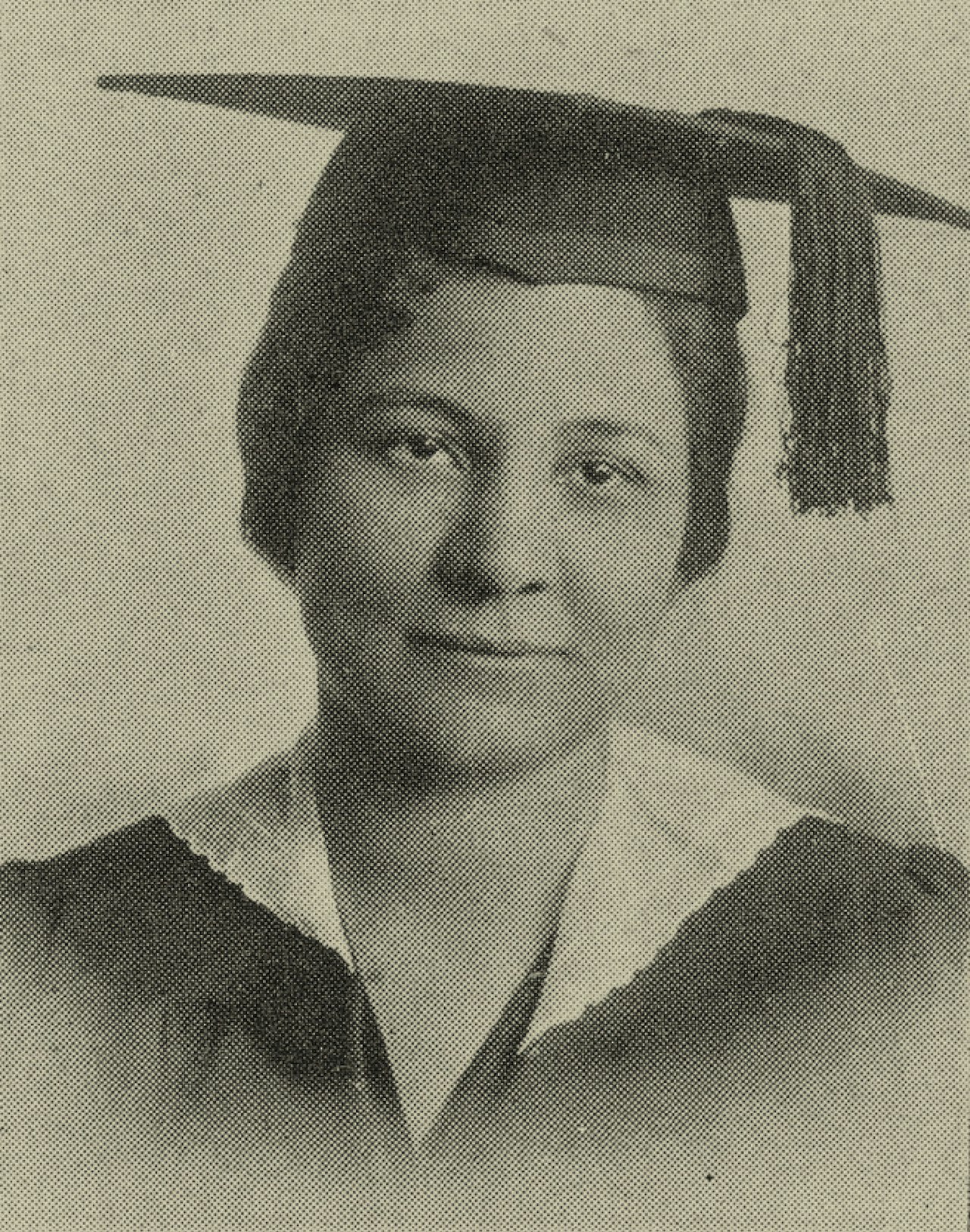Caroline Bond Day
Caroline Bond Day was among the first African Americans to earn a graduate degree from Radcliffe, and her work in anthropology directly challenged the racial hierarchies advanced by the eugenicists who dominated the field in her lifetime.
Best known for her anthropological studies of mixed-race families, Caroline Bond Day also taught literature and published short stories and reviews throughout her life. Her 1926 short story, “The Pink Hat,” explores questions of identity as well as the discrimination faced by mixed-race Black Americans like herself. In the poignant story, a light-skinned protagonist, Sarah, discovers that, when wearing a particular pink straw hat as she goes about her daily life in a southern city, she is routinely mistaken for white. She takes advantage of her discovery to experience life as a white woman, enjoying access to segregated spaces and simple kindness from white strangers.
“It is at once my magic carpet, my enchanted cloak, my Aladdin’s lamp,” says Sarah. She might well be speaking for Day, who studied English and classical literature at Radcliffe, earning an AB in 1919, and later taught at several historically Black colleges across the South. Day would go on to become one of the first Black women to earn a graduate degree from Radcliffe.
Challenging the Establishment
Before her arrival in Cambridge, Day earned her first bachelor’s degree in 1916 at Atlanta University (today Clark Atlanta University), where she was mentored by Harvard alumnus W. E. B. Du Bois. Du Bois encouraged her to pursue anthropology and, at Radcliffe, she studied with the renowned Harvard anthropologist Earnest Hooton.
Under Hooton’s tutelage in 1918, Day began a study of mixed-race families in the United States. Day graduated with the project still incomplete and went to work at the Circle for Negro War Relief in New York in 1919, where she met her future husband, Aaron R. Day Jr. After marrying, the couple moved to Texas, where Day served as head of the English Department at Prairie View State College (now Prairie View A&M University), and later to Georgia, where she taught English and drama at Atlanta University.
Back to Work
During the 1927–28 academic year, the Bureau of International Research at Harvard and Radcliffe awarded Day funding to continue her earlier anthropological research and, in 1929–30, she received a graduate fellowship to pursue her studies in the Anthropology Department.
Day’s study ultimately included more than 2,500 multiracial individuals from 346 families—including members of her own family. She recorded physical measurements and other descriptions, such as skin color and hair texture, and conducted in-depth interviews with her subjects about their family backgrounds and personal experiences.
In his introduction to the published version of Day’s study, Hooton himself acknowledged that Black Americans were an “inaccessible class” for white anthropologists. Day leveraged her personal connections and her extended social networks to convince participants to trust her with “treasured photos,” hair samples, and family stories that could be both deeply personal and difficult to share.
Day earned her AM from Radcliffe in anthropology in 1930, becoming one of the first African American women to receive a graduate degree in the field. In 1932, her master’s thesis, A Study of Some Negro-White Families in the United States, was published by Harvard’s Peabody Museum. Deploying some of the same techniques as the era’s prominent eugenicists, Day powerfully demonstrated that race is not a fixed category and that by no measure are Black and mixed-race Americans systematically inferior to whites.
While Day’s research is recognized as groundbreaking today, she was never able to secure a position in anthropology. She returned to teaching as a professor of English and continued to write about issues of race.
The Pink Hat
In “The Pink Hat,” Day’s Sarah makes the risky decision to allow people to think that she is white. She first discovers the hat’s power as a disguise when visiting a store she had frequented, where she is surprised that the clerk addresses her respectfully as “Mrs.”—rather than simply by her first name, as was customary for Black women in the segregated South.
After wearing the hat to another store, as an experiment, with the same results, she “[sets] out deliberately to deceive” in order to “enjoy all that had previously been impossible”—from basic services to cultural events. “For a brief space of time, I enjoyed everything from the attentions of an expert Chiropodist, to grand opera,” Day writes. Sarah avoids “only the restaurants—I could not have borne the questioning eyes of the colored waiters.”
The magic ends when Sarah falls and breaks an ankle while leaving a play at a local university. Homebound with her “colored family” in a “colored section of town,” Sarah is once again refused service—this time by a doctor she seeks out to treat her ankle. Once recovered and back at work, her hat becomes “useless”: she finds new joy in her family, her students, and her community. Her “brown boys and girls” are again “reservoirs of interest,” and she celebrates that one of them is headed to Radcliffe.
“Health, a job, young minds and souls to touch,” Sarah writes, “a friend, some books, a child, a garden, Spring! Who’d want a hat?”






